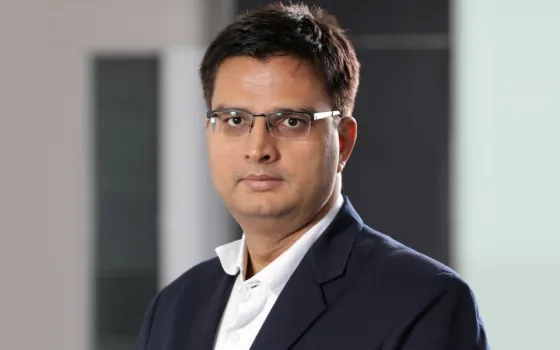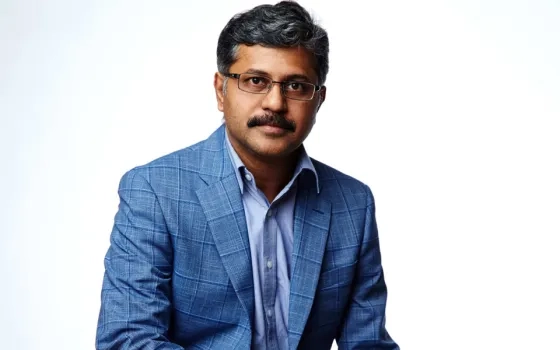Industry 4.0 refers to a new phase in the Industrial Revolution that focuses heavily on inter connectivity, automation, machine learning, and real-time data. Anil Pandey, AVP & Head – IoT Solutions, LTI – talks about how Industry 4.0 is playing a pivotal role in transforming business and fostering innovation in the IoT and IIoT space.

You can listen to the interview on LTI’s Sound Ideas podcast on Accelerating Industry 4.0 & Business Transformation
What is the Industry 4.0 the world is talking about?
Industry 4.0 is the most talked about concept nowadays. It starts with the convergence of physical and digital, which was the fundamental ideology behind how can we converge physical and digital together. The challenges, the world was facing was, when it was product, plant and aftermarket to be integrated. The challenges were manifold across. Products were getting redesigned. The processes were not nimble, the plant needed modernization, and everything needed to be technologically-empowered, so that the enterprises can reduce the cycle time of production and increase the speed-to-market. That’s how industry 4.0 came into existence. Bringing in new experience, connecting the services and moving closer to the point of sale to capture all the customer input that will affect the quality and design for the product, assembling this together – is basically industry 4.0.
But why there is a need for this transformation?
The market wants to focus on and foresee that you produce something which will give new experience to the customer. This could mean change in design or shorter cycle time for rolling out products in the market. But plants need modernization and usually the modernization will happen by replacing the plant & machinery, it’s a huge capital investment. There is a lot of cost and time involved in that. So, what it needed was that you do modernization by using technologies available at your disposal, which would not let you replay it, but still solve it with a faster turnaround and give capabilities to do the same thing in a better way.
Also, it is dif?cult to change your plant and machinery so often because the products are changing; there is a huge gap between the cost of product vs the cost of plant & machinery. In short, when it comes to introducing change, enterprises can’t be too agile at their plant & machinery level as they could be with their product. So, leveraging the new ways of modernizing the plant using disruptive technologies is a more feasible option.
At the plant level, the machineries, assets are supplied by multiple OEMs and they take care of their own requirements. For example, the products will go through their own licensing mode, the support will be limited to their design, besides there are different protocols of communications standards followed by the OEMs. This process needs to be normalized and the standards need to be interoperable; no OEM would take this journey in their hand, they cannot do it.
So there is an opportunity for all the Industry 4.0 service providers, to provide something in this space that can normalize all the protocols, make things interoperable, bring some standardization – a common application framework in such a way that you are able to create a digital plant platform, where all of the disparate systems are supplied by multiple OEMs, they can work together and still exchange information for the bene?t of the business, through which the CXOs can really take control, make informed decisions and ensure that the whole process is simpler and faster.
What are the enablers in this transformation journey?
Let’s start with the operation control, which then goes into production control. However, what you really need is a digital command and control center. And if you do it at one plant and roll it out to the other plant, eventually you can control the entire enterprise, that’s when it becomes the enterprise command center. After that, there’s a need for the horizontal and vertical integration, which is plant & the platform; the industry needs simulation before they produce something excellent. Why don’t we think about simulating the experience itself? The rejection will be low, but the quality will be very high. If you can connect these three, you will get all the data for decision making and your organization can become data-driven.
Additionally, you need a collaboration and crowd-sourcing platform. But how do you make all your ecosystem work together? How do you support your old products, which are there in the market? There you may need the additive manufacturing and 3D printing. If you can create a marketplace for thinking, you’re solving it.
What are the recent top technology interventions in this space, especially invoking customer interest and engagement?
Digital twins is one such technology, which is of two kinds. One is physical-digital and other is digital-digital. And the physical-digital is where there is a replica of the physical in a virtual world. And whatever happens at the physical level, is also getting replicated at the digital level. You will be noti?ed of any issue or concern in the virtual arena and you will be able to take decisions based on that. A deeper analysis in real-time is enabled by the virtual world. At the same time, use of the augmented reality, virtual reality, mixed reality, 3D printing, additive manufacturing, can be helpful. However, it’s very important that you include the right security, right communication protocol in your design. The latest are the 5G – the narrowband IoT, LTE, LoRaWAN, were there for a long time, but then and newer technologies are coming to change the game. There is cloud, cyber security, edge computing and analytics at an edge level – all this is enabling the industry 4.0.
So, how is this transformation rede?ning customer engagement in a new light and what are the commercial models that we will get to see?
As I said, the product, plant and after-market – the engagement will have to happen at this level. At the product level, the customer engages with the product and passes on the experience or feedback. There are no direct means to connect with your customer to your point of sale. If the company is able to automate the process of capturing the feedback and connect it to the plant processes, then the plant is connected, and so the after-sale. Hence, the customer feedback given at the point of sale should go into the R&D centers, where the designers will look at it and know why this experience is not coming through which was intended. If the experience is failing to deliver, then the design can take care of it. However, the market is that of an experience today, and not of product. Technically, the product is now being de?ned as an experience now.
Also, there is other commercial model “as-a-service economy”, where anything as-a-service would really determine the price of it. It will reduce the price, bring in differentiation, give the experience. Product-as-a-service is one thing; manufacturing-as-a-service is another thing, which is going to be a big change. It’s going to affect contract manufacturing in a very big way. The big manufacturers will go to manufacturing as a service, new things like “car-as-a- separate-service” will also be there. You will manufacture a product, but not only to sell it to an end customer, but to provide it as a service. These are the new economic and commercial models that are emerging.
How exciting the future looks like with Industry 4.0?
Bringing transformation looks easier on the surface, but you can’t do everything on your own. Knowledge is powerful when it is shared, but it needs a big ecosystem to deliver it; and when that happens you see people coming together, collaboration is happening. A lot of start-up alliances, partners will have to really come to a single platform. I would say marketplace as a concept will catch up. Everybody will create a marketplace, where their ecosystem can create an opportunity to co-innovate, co-develop. A connected ecosystem will make this happen as it will evolve with time and it will rede?ne things. As we go further, that’s how industry 4.0 should emerge. It’s very exciting!
About Author: Anil Pandey is AVP and serving as a Global Head for LTI’s IIoT Practice. He carries profound experience of working in the core engineering domain and is leading key IT projects for global energy & utility companies as well. He has helped companies carve out a technology strategy and delivered innovative projects in area of Smart Grid, Smart Utilities and Smart Cities. Many IPs to his credit, he leverages this unique blend of experience & knowledge to strategize for his IIoT business. Under his leadership at LTI, the practice is building IIoT solutions & offerings, which help clients to transform product supply & services.
This is part of our ongoing series TechVoice, where we bring to you the leaders of the industry talk about the latest in innovation, technology and trends in their industry sectors. If you want to contribute, write to sindhuja@nasscom.in
Follow NASSCOM CoE IoT-DSAI on LinkedIn, Twitter, Facebook, and Youtube

























